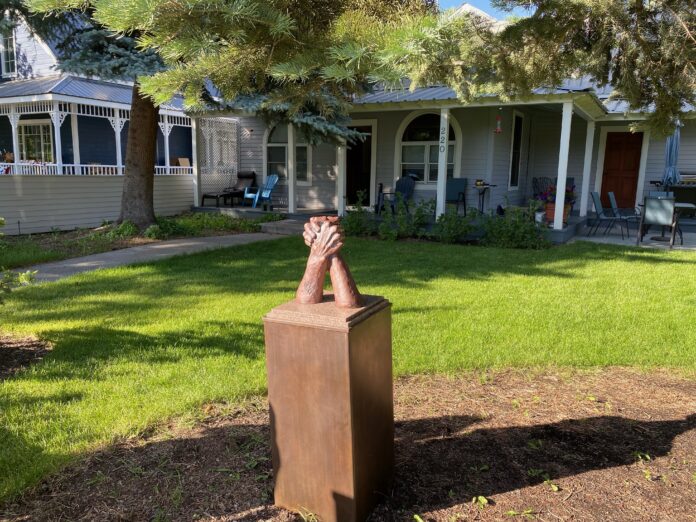
Men’s Second Chance Living hopes to purchase second house this summer
By Eric Valentine
The Landscape
There’s a saying in the Valley that goes something like this:
“One house, two jobs.”
Translation: Working class folks need two jobs to afford life along the Big Wood River.
Reality: In a resort area—an economic ecosystem that by its nature always has some amount of housing crisis—a near catastrophic level housing situation revises the saying to something like:
“Two and a half jobs, one bedroom, if any vacancy exists.”
Subject: Amid this landscape, a Valley nonprofit is managing to house up to eight men in a Hailey home. And by this summer, the Men’s Second Chance Living capital campaign may have the $900,000 it figures it will take to purchase a second single-family home that could house up to an additional eight men.
Side note 1: The “second chance” in the organization’s moniker refers to those men and their status as recovering from substance abuse disorder.
Side note 2: According to the National Center on Charitable Statistics, approximately 30% of nonprofits fail to exist after 10 years, and according to Forbes, over half of all nonprofits that are chartered fail within a few years.
Side note 3: If you told Americans that corporations’ and the uber-wealthy’s collective mantra is Gordon Gecko’s “Greed is good,” a majority might believe you.
The Blueprints
So given that full landscape, how is it that a local “halfway house” only five years old is three-fourths of the way there to reach a nearly $1 million goal of its fundraising campaign that’s taking place during a pandemic? By the way, it’s a campaign that as of Easter hadn’t even started yet. It must be the success of its recovery program.
For Caitlin Hegwood, the administrative assistant at MSCL and “right-hand” person for executive director Sonya Wilander, the peer-to-peer accountability built into the sober-living model and the “above and beyond” features like medical and dental care and educational funding are world class.
“This year we’ll have a resident who’s our first to graduate from college while living at the house,” Hegwood said. “He’ll be getting an (Associate of Arts) degree in Applied Science from CSI.”
Yet, according to Hegwood, all the benchmarks reached since MSCL launched in 2018 don’t explain the very substantial generosity shown by the Valley community overall and especially this year. There are a lot of nonprofit successes across Idaho and beyond. The trigger is psychologically far deeper: empathy.
“Addiction touches everyone. There’s not anyone out there who hasn’t been impacted directly,” whether it’s their own addiction or someone else’s, Hegwood observed.
And then add the whole layer of a housing crisis on top of the challenges these men face.
“Ironically, part of the reason this community is so generous is because they understand how serious the housing challenge is,” Hegwood said.
In September, MSCL leadership identified the need for more sober-living options countywide as substance use rates were rising nationally. And the demand for entry into the current MSCL housing supply (just one house in Hailey) has been increasing, too. In 2021, the organization received 19 applications, 13 of which were put on a wait list due to a lack of available beds. MSCL House’s current residential capacity simply falls short of the community’s immediate and future needs for sober homes.
“At that time, we talked to stakeholders in the organization to see if there was support for a capital campaign. We called that the silent days of our capital campaign and figured if we could get 60% of what we need by May, we’d then go to the public,” Hegwood said.
Well, it’s April, and they’re at roughly 75% of their goal.
The Location
So now the search for the right house begins. And although the group’s parameters are fairly simple, nothing’s easy when it comes to Valley home buying. Stephanie Reed, a local real estate agent, is their lead on the project, and MSCL is hoping she can help them find something like this:
3 to 4 bedrooms with adequate living space for 6 to 8 men
Access to public transportation
Proximity to a 12-Step meeting location
Close to markets or vendors with healthy food


